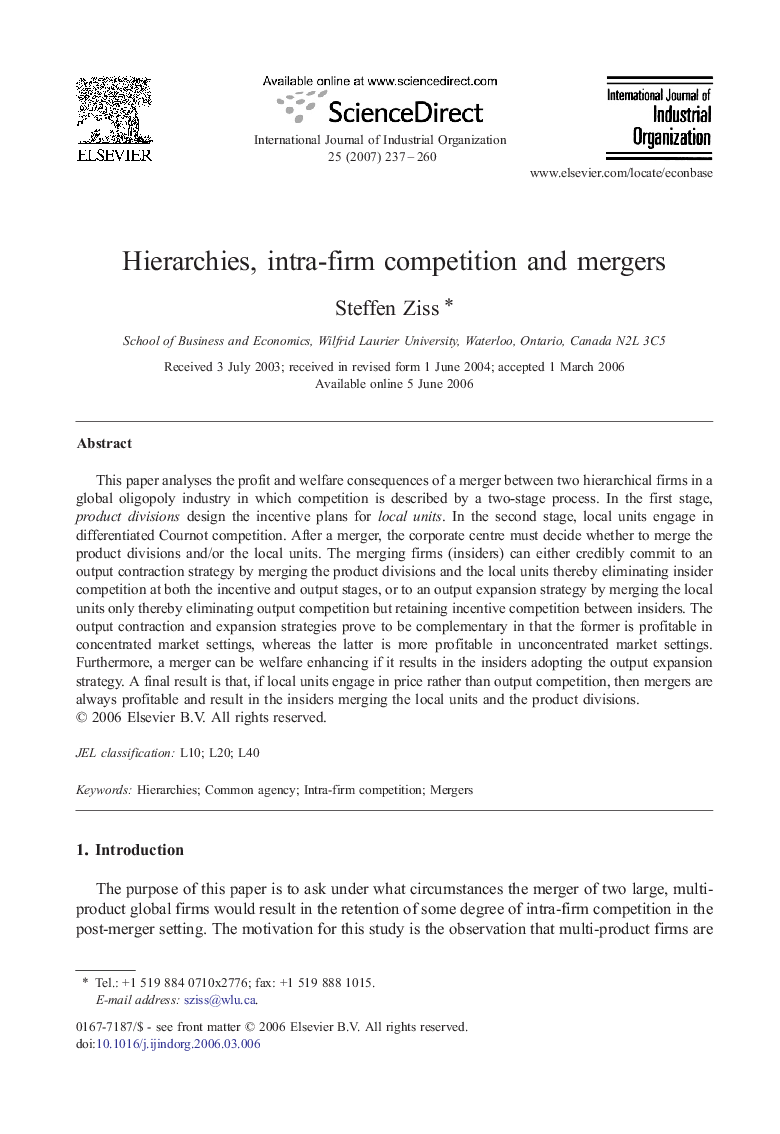| Article ID | Journal | Published Year | Pages | File Type |
|---|---|---|---|---|
| 5078688 | International Journal of Industrial Organization | 2007 | 24 Pages |
Abstract
This paper analyses the profit and welfare consequences of a merger between two hierarchical firms in a global oligopoly industry in which competition is described by a two-stage process. In the first stage, product divisions design the incentive plans for local units. In the second stage, local units engage in differentiated Cournot competition. After a merger, the corporate centre must decide whether to merge the product divisions and/or the local units. The merging firms (insiders) can either credibly commit to an output contraction strategy by merging the product divisions and the local units thereby eliminating insider competition at both the incentive and output stages, or to an output expansion strategy by merging the local units only thereby eliminating output competition but retaining incentive competition between insiders. The output contraction and expansion strategies prove to be complementary in that the former is profitable in concentrated market settings, whereas the latter is more profitable in unconcentrated market settings. Furthermore, a merger can be welfare enhancing if it results in the insiders adopting the output expansion strategy. A final result is that, if local units engage in price rather than output competition, then mergers are always profitable and result in the insiders merging the local units and the product divisions.
Related Topics
Social Sciences and Humanities
Economics, Econometrics and Finance
Economics and Econometrics
Authors
Steffen Ziss,
